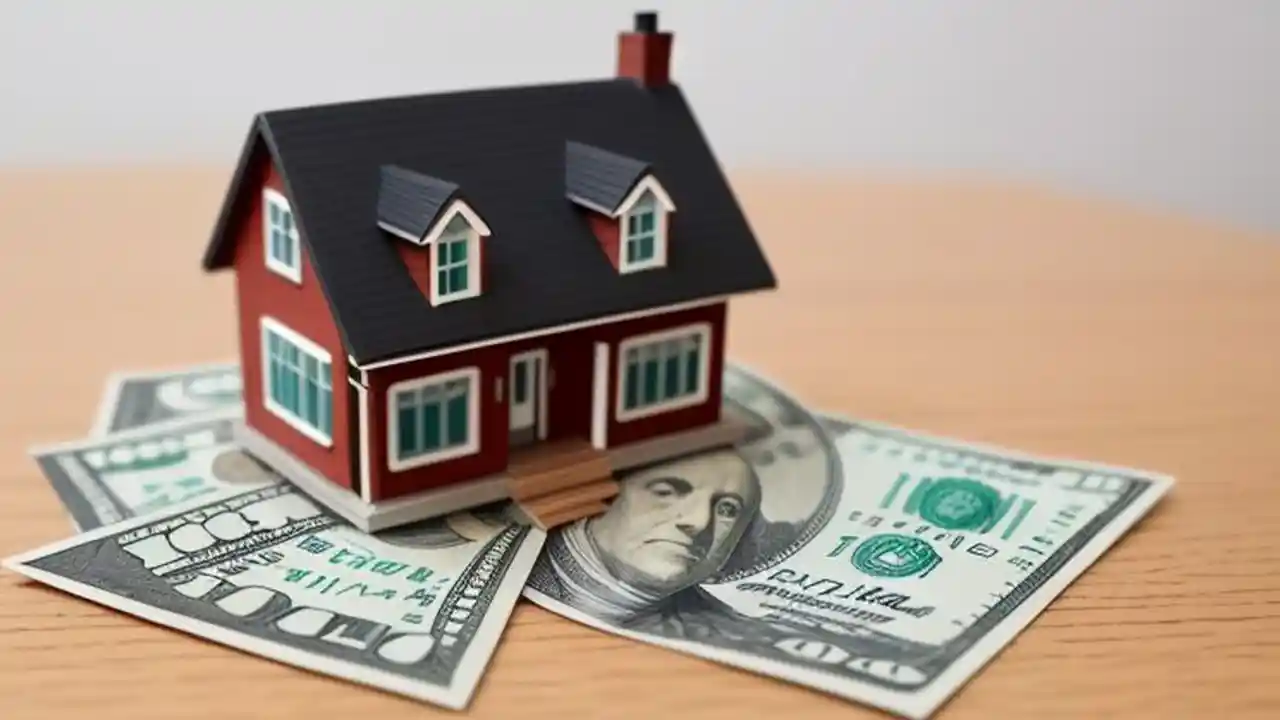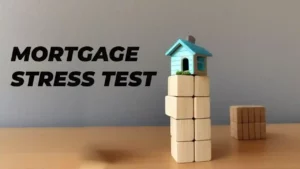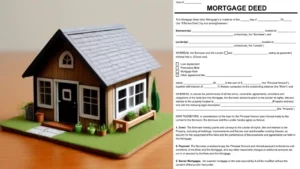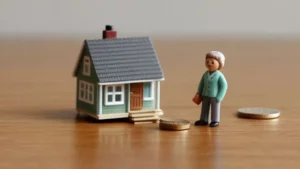Mortgagerateslocal.com – If you own a home, you probably know that you can tap into your home equity to get a loan or a line of credit for various purposes. But did you know that you can also lock in a fixed interest rate on some or all of the money you borrow from your home equity line of credit (HELOC)?
A HELOC fixed-rate option is a feature that allows you to convert a portion of your variable-rate HELOC balance into a fixed-rate loan. This means that you can enjoy the flexibility and convenience of a HELOC, while also protecting yourself from interest rate fluctuations and having predictable monthly payments.
We will explain what a HELOC fixed-rate option is, how it works, what are the benefits and drawbacks, and how to choose the best one for your situation. We will also provide some tips and examples to help you make the most of this option.
By the end of this post, you will have a better understanding of how a HELOC fixed-rate option can help you save money and enjoy peace of mind. So, let’s get started!
What is a HELOC Fixed-Rate Option?
A HELOC fixed-rate option is a feature that some lenders offer to their HELOC customers. It allows you to convert a portion of your outstanding HELOC balance into a fixed-rate loan, while keeping the rest of your balance as a variable-rate line of credit.
A HELOC fixed-rate option is also known as a fixed-rate advance, a fixed-rate lock, or a fixed-rate segment. It is different from a home equity loan, which is a separate loan that you take out as a lump sum and repay in fixed monthly installments.
With a HELOC fixed-rate option, you can choose how much of your HELOC balance you want to convert to a fixed rate, and for how long. You can also choose to have multiple fixed-rate options at the same time, each with different amounts, rates, and terms.
For example, let’s say you have a HELOC with a $100,000 credit limit and a variable interest rate of 5%. You have used $50,000 of your HELOC to pay for home improvements, and you still have $50,000 available to use. You decide to convert $20,000 of your HELOC balance into a fixed-rate option with a 4% interest rate and a 10-year term. This means that you will have:
- A fixed-rate loan of $20,000 that you will repay in 120 equal monthly payments of $202.49, with a total interest cost of $4,298.80.
- A variable-rate line of credit of $30,000 that you can use as needed, with a minimum monthly payment of interest only, which will vary depending on the market rate.
- An unused credit of $50,000 that you can access at any time, subject to the variable interest rate and the terms and conditions of your HELOC.
A HELOC fixed-rate option can give you more control over your borrowing costs and your cash flow. It can also help you save money on interest, especially if you expect the variable rate to increase in the future. However, it also has some drawbacks and limitations that you need to be aware of. We will discuss these in the following sections.
How Does a HELOC Fixed-Rate Option Work?
A HELOC fixed-rate option works by allowing you to convert a portion of your HELOC balance into a fixed-rate loan, while keeping the rest of your balance as a variable-rate line of credit. You can do this at any time during the draw period of your HELOC, which is the time when you can access your credit and make interest-only payments.
To use a HELOC fixed-rate option, you need to contact your lender and request to lock in a fixed rate on a certain amount of your HELOC balance. Your lender will then offer you a fixed interest rate and a repayment term for that amount, based on the current market conditions and your credit profile. You can either accept or decline the offer.
If you accept the offer, your lender will create a fixed-rate option for you, and deduct the amount from your available credit. You will then have to make fixed monthly payments on that amount, in addition to the minimum payments on your variable-rate balance. Your fixed-rate option will have a separate statement and a separate due date from your variable-rate balance.
You can have multiple fixed-rate options at the same time, each with different amounts, rates, and terms. However, there may be a limit on the number of fixed-rate options you can have, depending on your lender’s policies. You can also pay off your fixed-rate options early, without any prepayment penalties, unless your lender specifies otherwise.
A HELOC fixed-rate option is not a permanent change to your HELOC. It is a temporary conversion that lasts until the end of the repayment term of the fixed-rate option, or until you pay it off, whichever comes first. Once your fixed-rate option is paid off, the amount will be added back to your available credit, and you can use it again as a variable-rate line of credit, or convert it to another fixed-rate option.
Benefits and Drawbacks
A HELOC fixed-rate option can offer you several benefits, depending on your financial goals and needs. Some of the main benefits are:
- Saving money on interest: A HELOC fixed-rate option can help you save money on interest, especially if you expect the variable rate to increase in the future. By locking in a lower fixed rate, you can avoid paying higher interest on that portion of your HELOC balance. For example, if you have a $20,000 fixed-rate option with a 4% interest rate, and the variable rate rises to 6%, you will save $400 per year in interest on that amount.
- Having predictable monthly payments: A HELOC fixed-rate option can help you have predictable monthly payments, which can make it easier to budget and plan your finances. By knowing exactly how much you have to pay each month on your fixed-rate option, you can avoid any surprises or fluctuations in your payments. For example, if you have a $20,000 fixed-rate option with a 4% interest rate and a 10-year term, you will have to pay $202.49 every month, regardless of the variable rate.
- Enjoying flexibility and convenience: A HELOC fixed-rate option can help you enjoy the flexibility and convenience of a HELOC, while also having the stability and security of a fixed-rate loan. You can choose how much of your HELOC balance you want to convert to a fixed rate, and for how long. You can also have multiple fixed-rate options at the same time, each with different amounts, rates, and terms. You can also pay off your fixed-rate options early, without any prepayment penalties, unless your lender specifies otherwise. And you can still access your unused credit as a variable-rate line of credit, whenever you need it.
- Using it for various purposes: A HELOC fixed-rate option can help you use your home equity for various purposes, such as home improvements, debt consolidation, education, medical expenses, or any other personal or business needs. You can use the fixed-rate option for large, planned, or long-term expenses, and the variable-rate line of credit for small, unplanned, or short-term expenses. You can also use the fixed-rate option to pay off higher-interest debt, such as credit cards, and save money on interest.
A HELOC fixed-rate option can also have some drawbacks, depending on your financial situation and preferences. Some of the main drawbacks are:
- Paying higher fees: A HELOC fixed-rate option can cost you more in fees than a variable-rate line of credit. Some lenders may charge you a fee for each fixed-rate option you create, or a fee for each conversion you make. These fees can range from $50 to $500, depending on your lender and the amount you convert. Some lenders may also charge you an annual fee or a maintenance fee for your HELOC, regardless of whether you use the fixed-rate option or not. These fees can reduce the savings you get from the lower interest rate.
- Losing flexibility: A HELOC fixed-rate option can reduce your flexibility, compared to a variable-rate line of credit. Once you convert a portion of your HELOC balance to a fixed rate, you cannot change it back to a variable rate, unless you pay it off or refinance your HELOC. You also cannot access that portion of your credit again, until you pay off the fixed-rate option. This means that you may have less available credit to use for other purposes, or to cope with emergencies.
- Having higher monthly payments: A HELOC fixed-rate option can increase your monthly payments, compared to a variable-rate line of credit. This is because you have to pay both principal and interest on your fixed-rate option, while you only have to pay interest on your variable-rate balance. For example, if you have a $20,000 fixed-rate option with a 4% interest rate and a 10-year term, you will have to pay $202.49 every month, plus the interest on your variable-rate balance. If you only had a variable-rate balance of $20,000 with a 5% interest rate, you would only have to pay $83.33 every month, as interest only.
- Missing out on lower rates: A HELOC fixed-rate option can make you miss out on lower interest rates, if the variable rate drops below the fixed rate. This can happen if the market conditions change, or if the prime rate decreases. In this case, you will be paying more interest on your fixed-rate option than you would on a variable-rate line of credit. For example, if you have a $20,000 fixed-rate option with a 4% interest rate, and the variable rate falls to 3%, you will be paying $200 more per year in interest on that amount.
How to Choose the Best HELOC Fixed-Rate Option for Your Situation?
A HELOC fixed-rate option can be a useful tool to manage your home equity borrowing, but it is not a one-size-fits-all solution. You need to consider several factors before choosing the best HELOC fixed-rate option for your situation, such as:
1. Your financial goals and needs
You need to think about why you are using your HELOC, and what you want to achieve with it. For example, if you are using your HELOC for home improvements, you may want to lock in a low fixed rate for a long term, to save money on interest and have stable monthly payments.
If you are using your HELOC for debt consolidation, you may want to lock in a low fixed rate for a short term, to pay off your debt faster and free up your credit. If you are using your HELOC for emergencies, you may want to keep your balance as a variable-rate line of credit, to have more flexibility and access to your credit.
2. Your interest rate expectations
You need to think about how you expect the interest rates to change in the future, and how that will affect your borrowing costs. For example, if you expect the variable rate to increase in the future, you may want to lock in a low fixed rate as soon as possible, to avoid paying higher interest on your balance.
If you expect the variable rate to decrease in the future, you may want to wait for a better offer, or keep your balance as a variable-rate line of credit, to take advantage of the lower rate.
3. Your monthly budget and cash flow
You need to think about how much you can afford to pay each month on your HELOC, and how that will affect your cash flow. For example, if you have a tight budget and a low income, you may want to keep your balance as a variable-rate line of credit, to have lower minimum payments and more flexibility.
If you have a high budget and a stable income, you may want to lock in a fixed rate for a portion of your balance, to have predictable monthly payments and save money on interest.
4. Your lender’s terms and conditions
You need to think about the terms and conditions that your lender offers for your HELOC and your fixed-rate option, and how that will affect your borrowing experience.
For example, you need to check the fees, the limits, the penalties, the eligibility, and the availability of the fixed-rate option, and compare them with other lenders. You also need to check the customer service, the online access, and the reputation of your lender, and see if they meet your expectations.
How to Use a HELOC Fixed-Rate Option Effectively?
A HELOC fixed-rate option can be a powerful tool to manage your home equity borrowing, but you need to use it wisely and responsibly. Here are some tips and examples to help you use a HELOC fixed-rate option effectively:
- Compare your options: Before you choose a HELOC fixed-rate option, you should compare your options and shop around for the best deal. You should compare the interest rates, the fees, the terms, and the features of different lenders, and see which one offers you the most value and convenience. You should also compare the fixed-rate option with other types of home equity borrowing, such as a home equity loan or a cash-out refinance, and see which one suits your needs and goals better.
- Plan ahead: Before you use a HELOC fixed-rate option, you should plan ahead and have a clear purpose and budget for your borrowing. You should only use your HELOC for worthwhile and necessary expenses, such as home improvements, debt consolidation, education, or medical expenses. You should also have a realistic and detailed repayment plan, and stick to it. You should avoid using your HELOC for frivolous or impulsive spending, such as vacations, shopping, or gambling, as this can lead to debt problems and financial stress.
- Monitor your balance: After you use a HELOC fixed-rate option, you should monitor your balance and your payments regularly. You should check your statements and your online account, and see how much you owe, how much you pay, and how much you have left. You should also keep track of the interest rates, and see how they change over time. You should also review your fixed-rate options periodically, and see if they are still working for you, or if you need to make any changes or adjustments.
- Pay more than the minimum: After you use a HELOC fixed-rate option, you should pay more than the minimum required on your balance, if you can afford it. By paying more than the minimum, you can reduce your interest costs, shorten your repayment term, and free up your credit faster. You can also save money on fees, as some lenders may waive or reduce the fees for the fixed-rate option if you pay it off early. You can also improve your credit score, as paying off your debt can boost your credit utilization ratio and your payment history.
What are the Risks of a HELOC Fixed-Rate Option?
A HELOC fixed-rate option can also have some risks, depending on the market conditions and your personal circumstances. Some of the main risks are:
- Losing your home: A HELOC fixed-rate option is secured by your home, which means that if you fail to make your payments, your lender can foreclose on your home and sell it to recover the debt. This can happen if you lose your income, have unexpected expenses, or face other financial difficulties. You can also lose your home if your home value drops below your HELOC balance, and your lender demands that you pay the difference, which is known as a margin call. This can happen if the housing market crashes, or if your home is damaged by a natural disaster or other causes.
- Paying more in taxes: A HELOC fixed-rate option can affect your taxes, depending on how you use it and what the tax laws are. For example, if you use your HELOC for purposes other than buying, building, or improving your home, you may not be able to deduct the interest you pay on your HELOC from your income taxes. This can increase your tax liability and reduce your savings. You should also be aware of the changes in the tax laws, such as the Tax Cuts and Jobs Act of 2017, which reduced the limit on the amount of home equity debt that you can deduct from $100,000 to $0, unless you use it for home acquisition or improvement.
- Having a negative impact on your credit score: A HELOC fixed-rate option can have a negative impact on your credit score, depending on how you use it and how you manage it. For example, if you use a large portion of your HELOC, you can increase your credit utilization ratio, which is the percentage of your available credit that you use. This can lower your credit score, as it indicates that you are relying too much on your credit. You can also lower your credit score if you miss or make late payments on your HELOC, or if you default on your HELOC. This can damage your payment history, which is the most important factor in your credit score.
Conclusion
A HELOC fixed-rate option is a feature that allows you to convert a portion of your variable-rate HELOC balance into a fixed-rate loan. This can help you save money on interest, have predictable monthly payments, enjoy flexibility and convenience, and use your home equity for various purposes.
We hope that this blog post has helped you understand how a HELOC fixed-rate option works, what are the benefits and drawbacks, and how to choose and use the best one for your situation.




